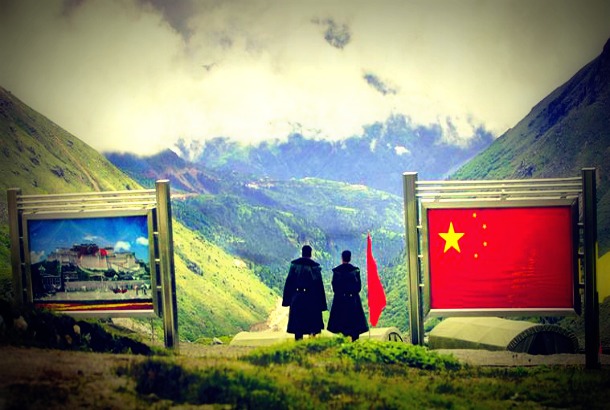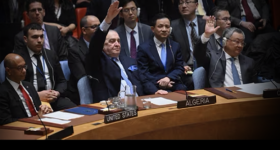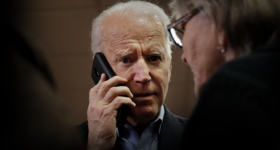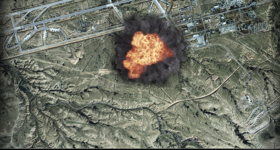Niraj Srivastava
21st Century Wire
It is now almost six weeks since Chinese troops attempted to extend a road on Bhutan’s Dolam Plateau south towards the Jampheri Ridge. Indian troops, deployed at the Indian Army post at Doka La, physically prevented the Chinese from building a road from the “Turning Point” on the Dolam Plateau to the Ridge.
Extension of the road would have endangered the security of the “Siliguri Corridor,” a narrow strip that joins the Indian mainland with India’s northeastern states.
India’s action mentioned above elicited a shrill and vitriolic reaction from China which demanded immediate pullout of Indian troops and threatened war if India did not do so.
In contrast, India made an official statement on June 30 outlining its position and called for talks to resolve the differences peacefully. The Indian Foreign Minister, Sushma Swaraj, stated in Rajya Sabha on July 20 that China’s action in Dolam violated a 2012 Agreement between the two countries to maintain the status quo in the area, till the issue was resolved through talks between India, China, and Bhutan.
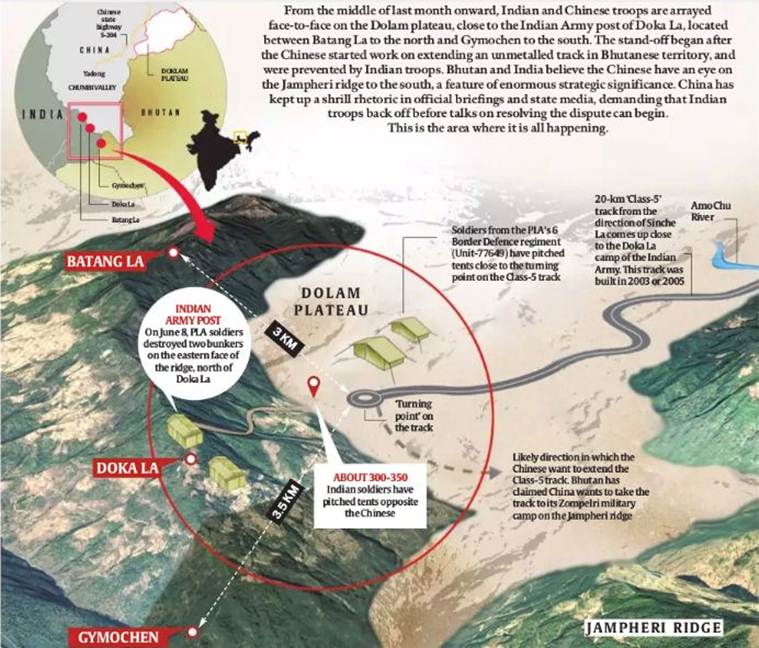 (Infographic courtesy of Indian Express)
(Infographic courtesy of Indian Express)
Swaraj also suggested that both sides should withdraw their troops to restore the status quo ante, and commence talks to settle the matter. The Indian statements were couched in polite language, unlike those made by China. Nevertheless, China’s Global Times, called Swaraj a liar.
But how did matters come to such a pass? The Dolam stand-off is not a sudden, isolated incident. There is a long history behind it of similar incidents, in 1967, 1986, 2013, and 2014.
Moreover, according to India’s Home Ministry, during the last couple of years, the average number of incursions into Indian territory by Chinese troops across the Himalayan border is at least one every day. And, lately, Chinese troops have been intruding into Uttarakhand and Sikkim also, whose boundaries are settled.
These developments suggest that all is not well with India’s China Policy (ICP), despite assertions by Indian policymakers that the policy has, by and large, maintained “peace and tranquillity” between the two countries, and “not a single bullet has been fired” across the border in the last 50 years.
But should firing bullets be the main, or the only, metric by which the success or failure of ICP is judged? Or are there other yardsticks which are also equally, if not more, important?
Some analysts believe there are. And if they are applied, ICP has not been successful and needs to be reviewed, if incidents like the present crisis in the Doklam Plateau are to be prevented.
In fact, the ancient Chinese strategist Sun Tzu said, “The supreme art of war is to subdue the enemy without fighting.” Clearly, he thought that wars could be won without firing a single bullet. This is what China appears to be doing, and this is why firing bullets is not the most important yardstick to assess ICP.
On the other hand, criteria like expansion of territorial claims; military encirclement of a country; strengthening a country’s enemy; violating written bilateral agreements and international law; imbalanced trade; opposing a country in multilateral forums; supporting insurgency inside a country; and creeping encroachment on a country’s territory, are some useful yardsticks to judge the effectiveness of India’s China policy.
When these criteria are applied to ICP, it looks more like a failed policy than a successful one. It might be useful to examine the issue in detail.
First, expansion of territorial claims. This has been happening since 1950-51 when China annexed Tibet, which was not an integral part of China. The absence of any resistance from the Indian side encouraged China to go further and annex Switzerland-sized Aksai Chin, after defeating India in the 1962 war.
Major border incidents took place in 1967 at Nathu La and in 1986 at Sumdurong Chu, when Chinese troops intruded into Indian territory. The Indian Army responded appropriately, preventing Chinese annexation of Indian territory in these areas.
But the Chinese really started expanding their territorial claims in a big way in 2006, after India had “recognized” Tibet as “part of the territory of the Peoples Republic of China” during Prime Minister Vajpayee’s visit to Beijing in 2003. With Tibet in their pocket, they claimed the whole of Austria-sized Arunachal Pradesh in 2006, calling it “South Tibet.”
Then, in 2010, China started issuing stapled visas to residents of Jammu and Kashmir, clearly questioning the status of J&K as an integral part of India. Sometime after that, they shortened the India-China border in the Kashmir sector in their official maps, by erasing the 1597 km line separating Indian J&K from Chinese-held Kashmir. India now faces Chinese troops on both flanks of its portion of J&K. China also currently occupies about one fifth of the undivided J&K.
Chinese troops again intruded into Ladakh’s Depsang plateau in 2013 during Chinese Prime Minister Li Keqiang’s visit to India. They repeated that in 2014 in Chumar when Chinese President Xi Jinping was visiting India. The timing of these incursions was not a coincidence.
During the last one year, China has speeded up work on the China-Pakistan Economic Corridor, a $62 billion infrastructure project that links China’s Xinjiang region with the Pakistani port of Gwadar. China has ignored Indian protests that the project violates Indian sovereignty, as it passes through Pakistan-occupied Kashmir (POK). Through the CPEC, China is enlarging its strategic footprint in POK.
China’s latest territorial claim is in the Dolam Plateau which belongs to Bhutan but is strategically vital for India, as explained above. It is therefore clear that ICP has failed on the score of territorial claims by China.
Regarding military encirclement of India, China has been doing so for the last several years by strengthening relations with countries on India’s periphery and, wherever possible, obtaining military facilities. Its “String of Pearls” policy includes the new Chinese naval base in Djibouti, Gwadar in Pakistan, and possible military facilities in Hambantota (Sri Lanka), Chittagong (Bangladesh), and Kyaukpyu (Myanmar).
China has been arming Pakistan for many decades now, including transfer of nuclear and missile technology to that country in the 1970s and 80s. Acquisition of nuclear capability emboldened Pakistan to launch cross border terrorism in J&K in 1989, which has continued ever since. China also protects Pakistani terrorists such as Masood Azhar in the UN, clearly sending the signal that it supports Pakistani terrorism in Kashmir.
China has a consistent record of violating written agreements and international law. Among other things, it has violated the 2012 Agreement with India to maintain the status quo in the Dolam Plateau by trying to change the tri-junction point unilaterally. It has also violated international law by claiming almost the whole of the South China Sea.
In recent times, China has often used trade as a political weapon against countries which did not follow its diktats, such as South Korea, Mongolia, and Norway. It has a trade surplus of $60 billion with India—more than India’s defence budget of $54 billion in 2017. Its exports to India are five times India’s exports to it.
This is an unsustainable situation if India wishes to protect and expand its manufacturing base. China is dumping manufactured good in India at artificially low prices, undermining India’s domestic Industry. It has erected non-tariff barriers to prevent import of Indian manufactured goods into China.
In multilateral forums, China has strongly opposed India on strategic issues such as permanent membership of the UN Security Council. In the recent past, it has opposed India’s entry into the Nuclear Suppliers Group (NSG).
China has long supported insurgency in India’s north-eastern states and continues to do so, though on a smaller scale. Leaders of some insurgent groups have been given refuge in China.
Creeping encroachment has been a significant Chinese activity across the India-China border for a long time. For example, India maintains that the tri-junction point (TJP) in the Dokalam area is at Batang La, almost three km. north from the present de-facto TJP at “Turning Point” on the Dolam Plateau.
Over the years, China has gradually encroached on Bhutanese territory from Batang La to the current TJP, without any resistance from either Bhutan or India. And now China wants to encroach on even more Bhutanese territory by pushing the TJP further south to the Jampheri Ridge, which would seriously endanger Indian security, as explained above.
These examples indicate how China has undermined Indian security in the last five decades “without firing a single bullet.” China is closing in on India from multiple flanks, from Nepal to the Indian Ocean, with the objective of strangulating it. Clearly, India’s China Policy needs a thorough review to prevent further damage to India’s security.
But before doing so, it might be useful to examine why India has persisted with its China policy for so long despite its obvious shortcomings. The main reason is fear of another 1962. This is understandable to the extent that the military balance has been, and is, tilted in China’s favour. Also tilted in China’s favour is the “Comprehensive National Power” of the two countries.
On the other hand, India has to defend itself against any power, big or small, resolutely. We cannot permit any further loss of Indian territory to China or Pakistan.
In fact, we have done so in the past, in 1967 and 1986, as mentioned above, when our military capabilities were much less than what they are now. So our national will to defend our territorial integrity is not in doubt.
We should, therefore, be prepared to fight a war with China over Dolam if that country does not see reason and agree to withdraw its troops from there. Of course, war should be the last option, after all diplomatic efforts have been exhausted. Also, we should not start a war ourselves; we should respond if China starts one.
Fortunately, according to some experts, Indian forces in the Dolam area are better placed than the Chinese in terms of terrain and logistics. Hopefully, that would discourage the Chinese from launching a war. But if they still choose to do so, we should use the opportunity to teach them a lesson. It is not impossible; we did it in 1967. Maybe, that would help us to exorcise the ghosts of 1962.
Our bottom line should be unconditional withdrawal of Chinese troops and restoration of status quo ante, after which we, too, will withdraw our troops to their earlier positions. Since China has precipitated this crisis, it should also take the first step to defuse it.
If, on the other hand, we buckle under Chinese pressure and withdraw our troops, China will succeed in reducing us to the status of a vassal, which is what it wants. And that is how our neighbours and the world will see us, whether we like it or not.
Moreover, that would not be the end of the matter. China will create bigger incidents in the future, aimed at grabbing Arunachal Pradesh and possibly more territory in J&K. By capitulating at Dolam, India would only be postponing the day of reckoning, which will surely come, sooner or later.
Coming back to the issue of reviewing India’s China Policy, what could be the essential elements of a review?
First, we should figure out how best to defend India’s territorial integrity and prevent creeping encroachment on Indian territory. Since China is expanding its territorial claims on India, we should seriously consider reopening the Tibet issue in a subtle and measured way. China is playing both the Tibet and the Kashmir cards with us; we should return the compliment.
Second, we should build closer relations with Taiwan including military cooperation with that country. Since China does not believe in a “One India” policy, why should we support a “One China” policy? We need not say so in so many words; let China draw its own conclusions.
Third, in view of China’s arms transfers to Pakistan, we should consider selling the Brahmos cruise missile to countries such as Vietnam, which are interested in buying it.
Fourth, we need to urgently take steps to redress the huge trade deficit with China. That country needs to be punished, not rewarded, for its bad behaviour. There are many ways of doing so; our experts can figure out the details.
Fifth, we need to get rid of our defeatist mentality and defensive approach—both legacies of 1962—to China, and deal with that country as an equal. Countries far smaller and weaker than us have stood up to bullying by much stronger powers.
Sixth, we should scrupulously practice reciprocity in bilateral relations with China. Our response to a Chinese act should be proportionate and measured. We sent an entirely wrong signal to China when, after it had created visa issues regarding residents of J&K and Arunachal Pradesh, we decided to give visas on arrival in India to Chinese nationals. Again, while China was allowed to open a Consulate in Kolkata, it did not allow India to open one in Lhasa.
Seventh, we need to guard against the possibility of malware being embedded in certain strategic goods, such as power and telecom equipment, imported from China. A rigorous process of security clearance should be put in place for such imports, or their import should be banned altogether.
Eighth, the government of India must convey the true picture regarding India-China relations to the people of India. It should not cover-up or fudge Chinese misdeeds as it has often done in the past. As a result, many Indians are confused; they don’t know whether China is a friend or a foe.
Ninth, India should stop participating in meaningless anniversaries like those of Panchsheel, which China started violating even before the ink on the Agreement was dry. Subsequent Chinese moves culminated in the 1962 attack on India. China continues to violate Panchsheel.
Finally, the Indian government should stop including platitudes such as “India and China together can promote regional and global security” etc. in Joint Statements. How can this be true when they cannot stabilise their own relations?
***
Author Niraj Srivastava is a former Ambassador of India who has served in several countries around the world.
DISCLAIMER: The author writes for this publication in a private capacity which is unrepresentative of anyone or any organization except for his own personal views. Nothing written by the author should ever be conflated with any of the editorial views or official positions of this outlet, nor any other media outlet or institution.
READ MORE ON INDIA AT: 21ST CENTURY WIRE’S INDIA FILES
SUPPORT OUR WORK BY SUBSCRIBING & BECOMING A MEMBER @21WIRE.TV



